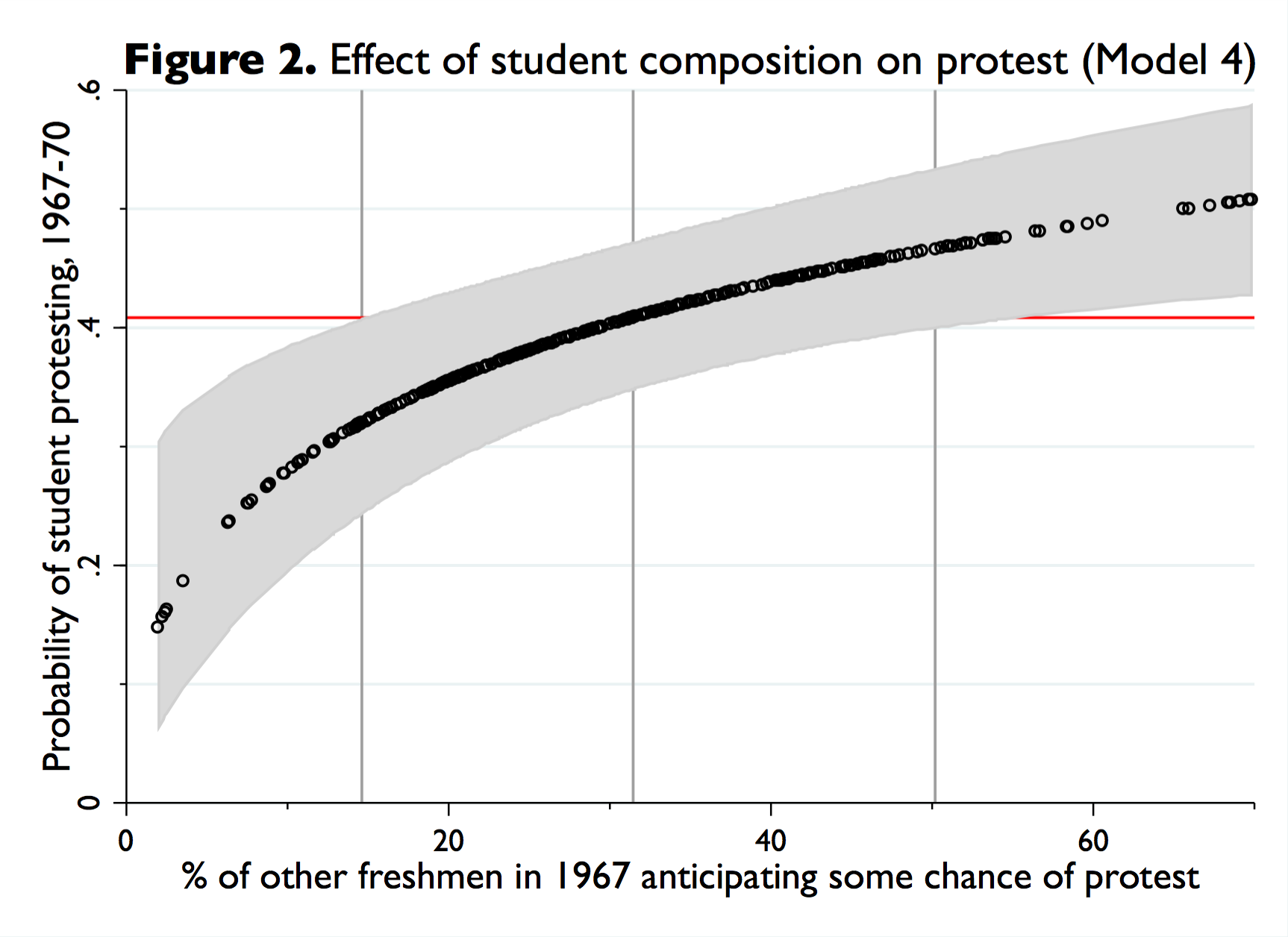 There is an extensive literature on how individual voters are influenced by the actions and attitudes of others in their social network or geographical area. Comparable analyses of social movements are lacking. This paper uses a panel of freshmen entering American colleges in 1967, who were sampled again in 1970. Freshmen were asked to estimate their own chance of protesting. This provides a comprehensive control variable at the individual level, and is aggregated at the college level to measure social influence. From analysis of 11,355 students, the probability of protest during college increased markedly with the proportion of their peers who had anticipated that they would protest, controlling for over thirty variables pertaining to the individual, college, and state. This effect is plausibly attributed to social interaction within college, rather than selection into certain colleges by individuals already inclined to protest; the effect is strong even for students who had expected not to protest. Students protested, in part, because their peers did. Although most variation among colleges can be explained by the characteristics of entering freshmen, initial differences were amplified by social influence.
There is an extensive literature on how individual voters are influenced by the actions and attitudes of others in their social network or geographical area. Comparable analyses of social movements are lacking. This paper uses a panel of freshmen entering American colleges in 1967, who were sampled again in 1970. Freshmen were asked to estimate their own chance of protesting. This provides a comprehensive control variable at the individual level, and is aggregated at the college level to measure social influence. From analysis of 11,355 students, the probability of protest during college increased markedly with the proportion of their peers who had anticipated that they would protest, controlling for over thirty variables pertaining to the individual, college, and state. This effect is plausibly attributed to social interaction within college, rather than selection into certain colleges by individuals already inclined to protest; the effect is strong even for students who had expected not to protest. Students protested, in part, because their peers did. Although most variation among colleges can be explained by the characteristics of entering freshmen, initial differences were amplified by social influence.
Michael Biggs, Department of Sociology, University of Oxford
